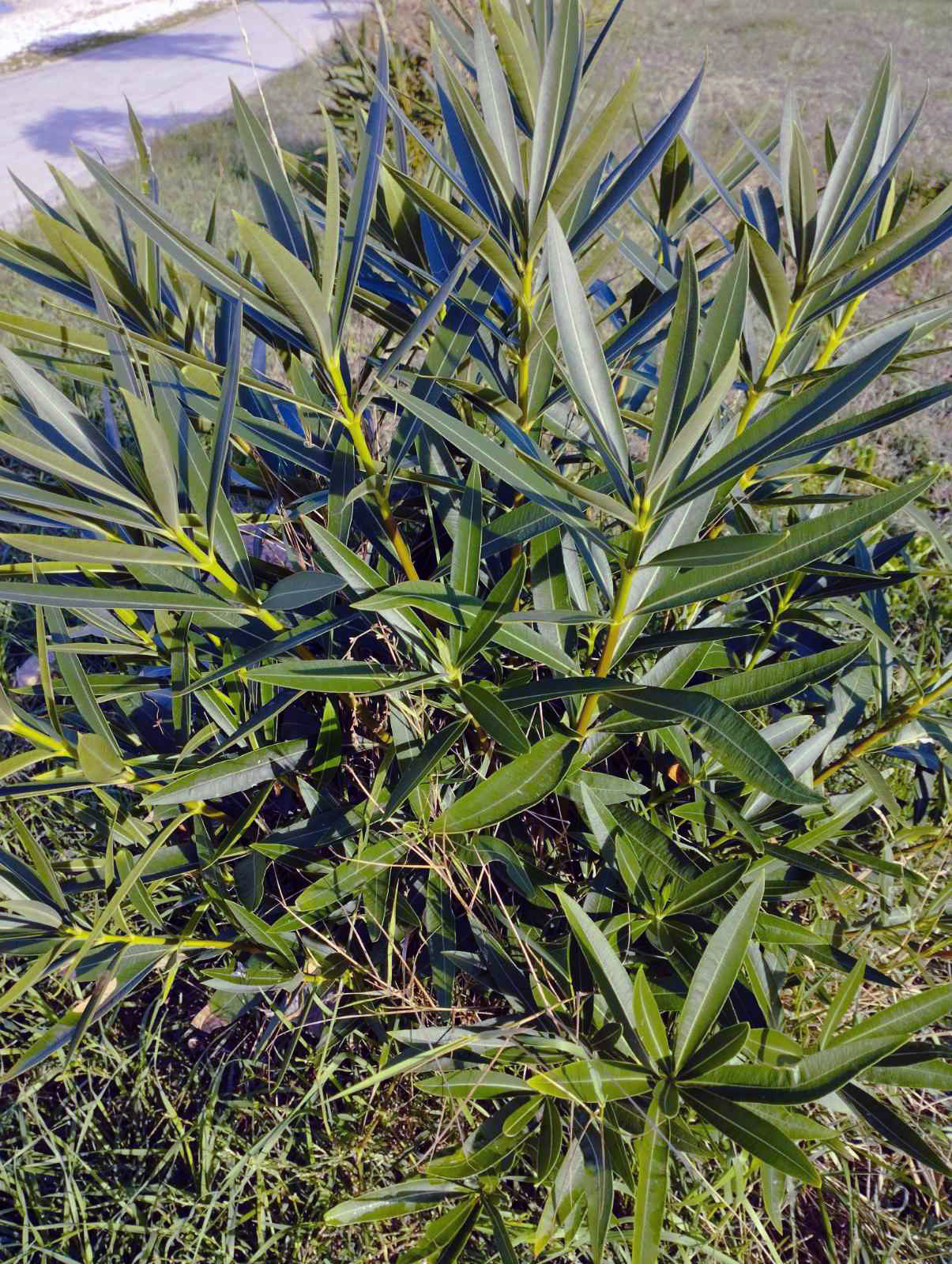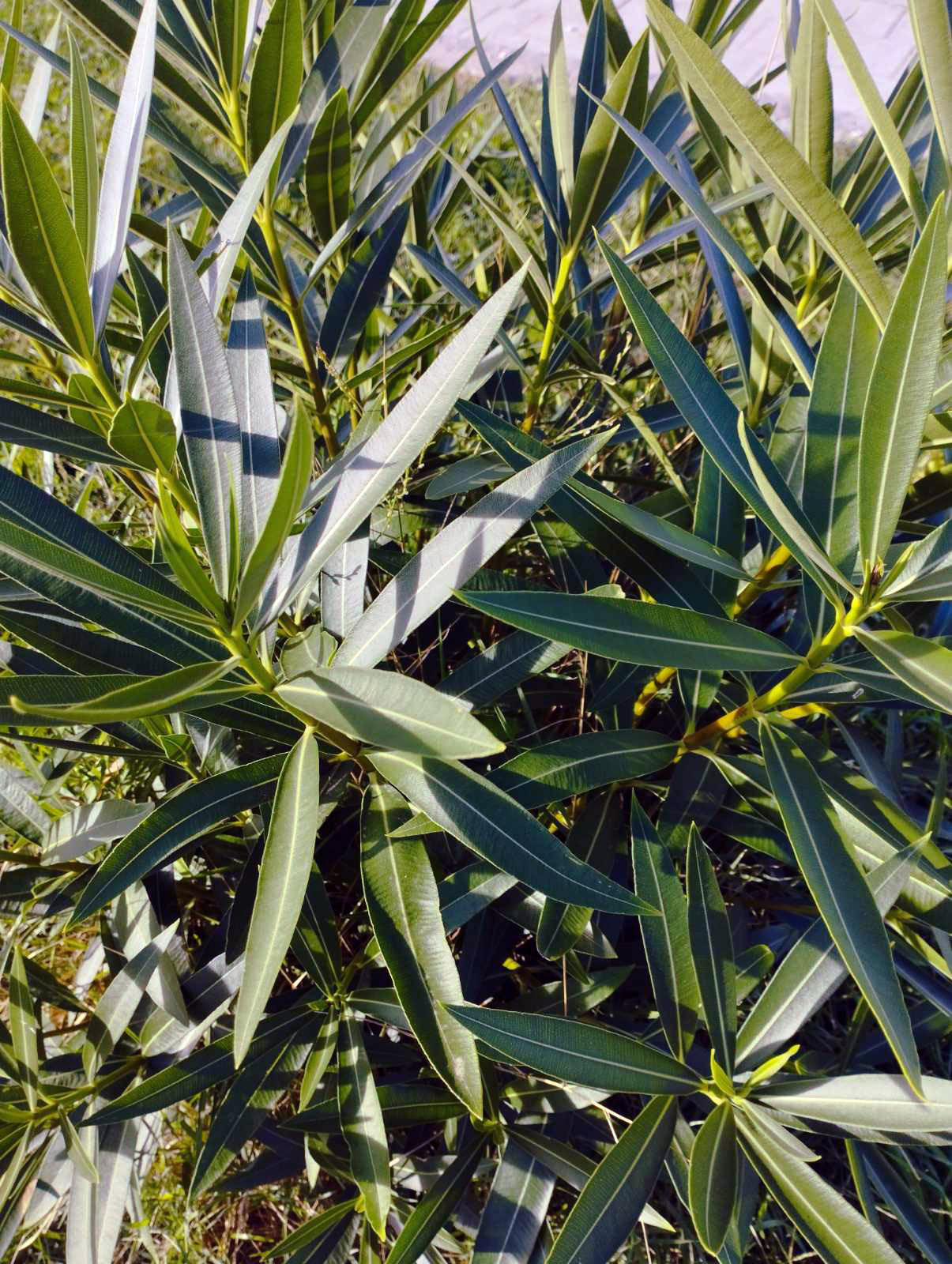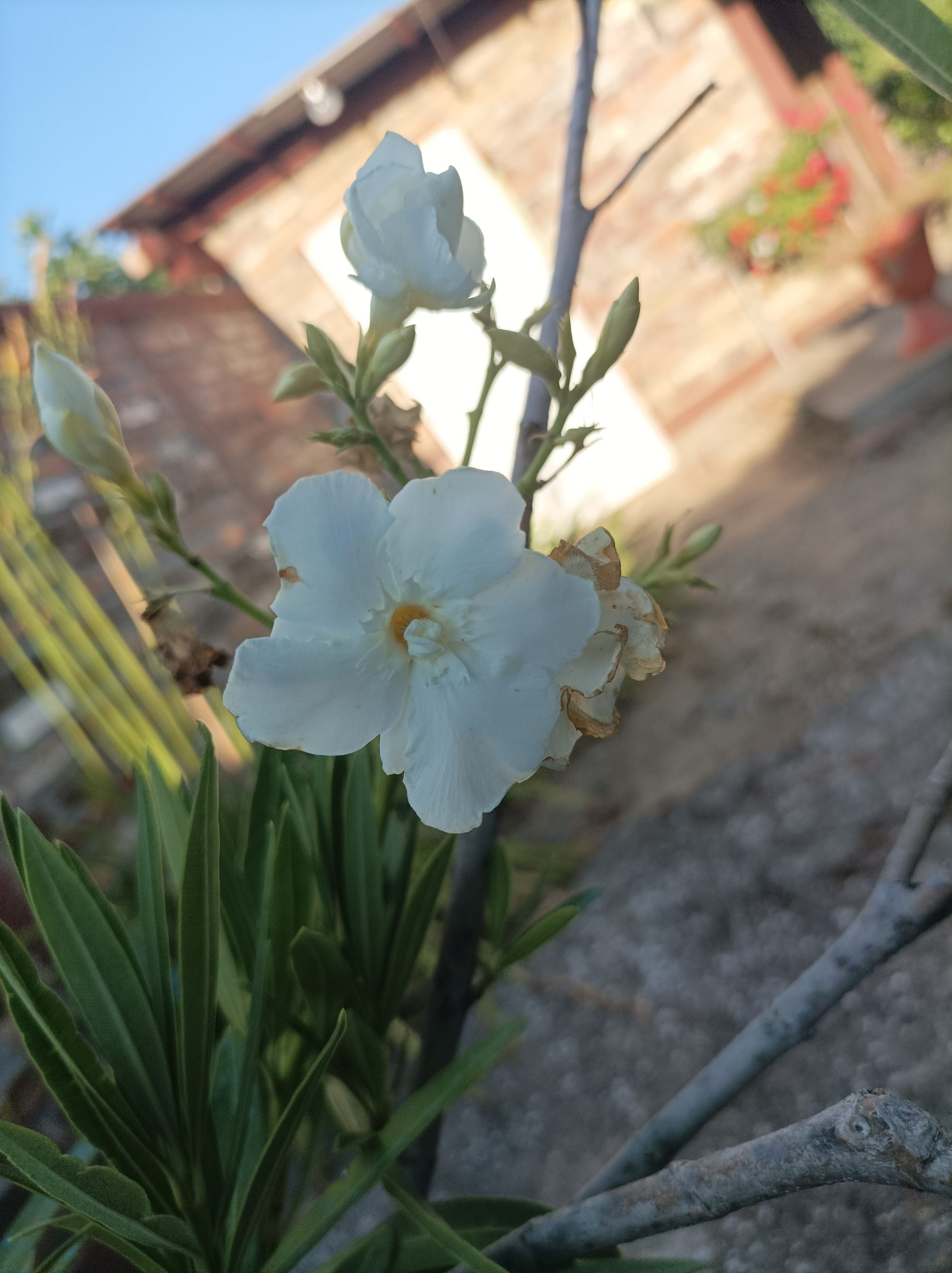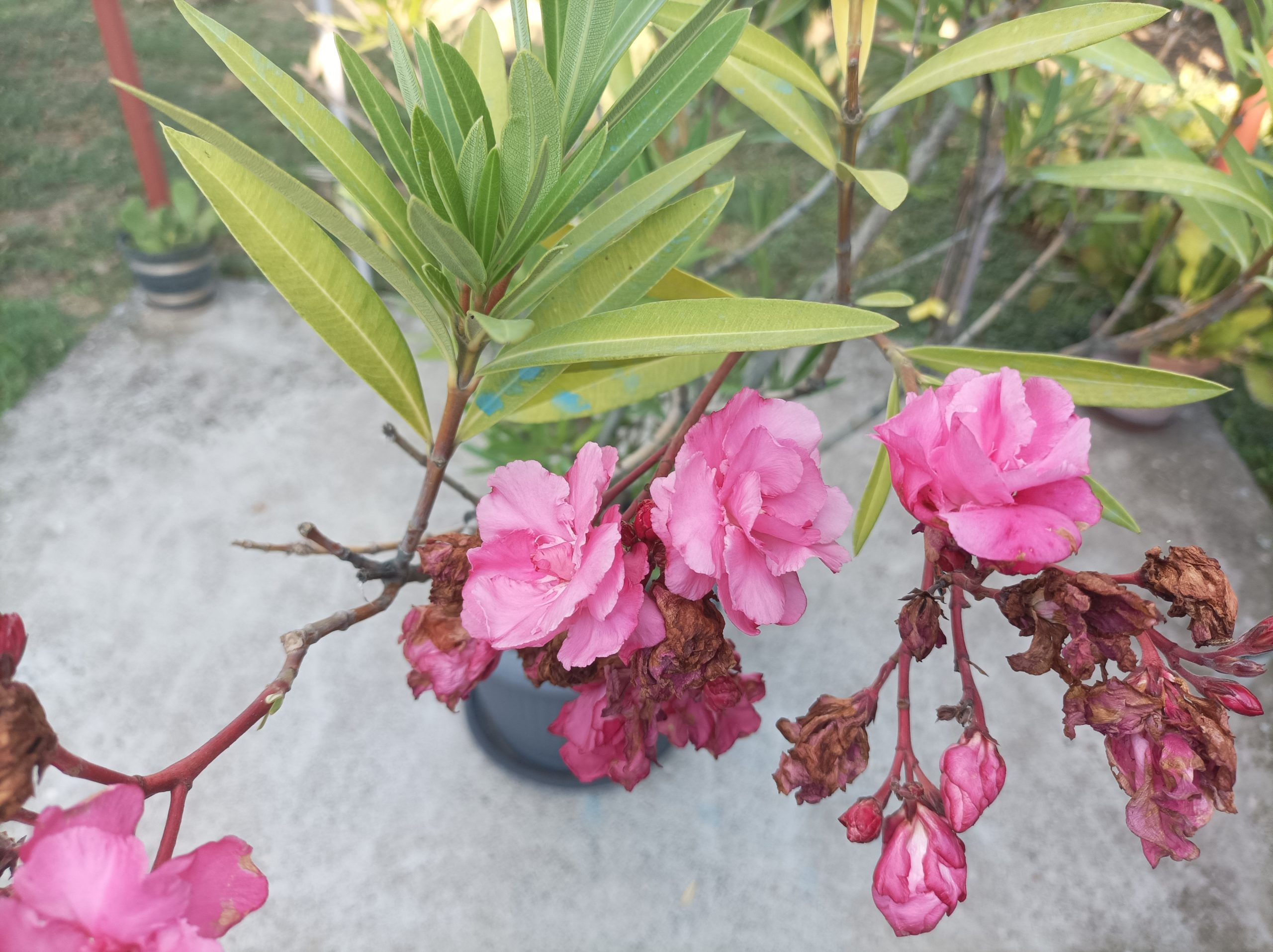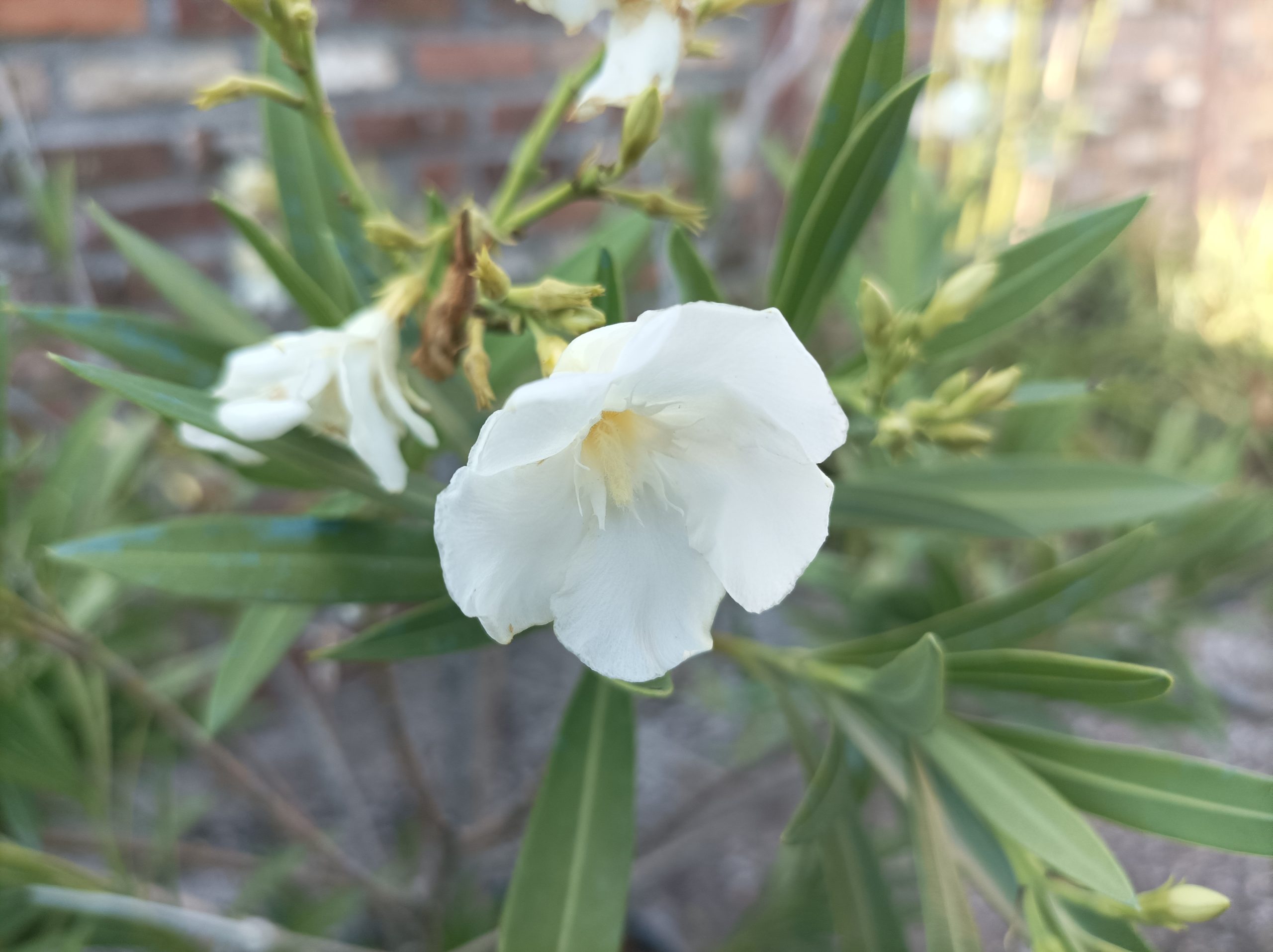Oleander (Nerium oleander)
Oleander, scientifically named Nerium oleander, is a striking evergreen shrub native to the Mediterranean region and parts of Asia. It flourishes in warm, dry climates and is a familiar sight along roadsides, in coastal gardens, and as a decorative hedge. This plant typically grows between 6 and 20 feet (1.8 to 6 meters) tall, forming dense, upright clumps with multiple stems.
Its long, leathery leaves grow in whorls of three, are dark green, and have a narrow, lance-shaped form. Throughout the warmer months, it produces clusters of showy, five-petaled flowers in shades of pink, white, red, or yellow. These blossoms are often fragrant and highly attractive to pollinators like bees and butterflies.

Oleander tolerates drought, poor soils, and salty air, making it ideal for Mediterranean gardens. It prefers full sun but can also manage in light shade. Though hardy and low-maintenance, all parts of the plant are highly toxic if ingested, making it important to handle with care, especially around children and pets.
The plant is valued not just for its beauty but also for its resilience in harsh, dry environments. It serves both functional and ornamental purposes in landscaping, providing color, privacy, and structure year-round.

Scientific Classification of Oleander
| Kingdom | Plantae |
| Clade | Angiosperms |
| Clade | Eudicots |
| Clade | Asterids |
| Order | Gentianales |
| Family | Apocynaceae |
| Genus | Nerium |
| Scientific Name | Nerium oleander |

Quick Information
| Plant Type | Evergreen shrub |
| Identification | Height: 6 to 20 feet (1.8 to 6 meters) Leaves: Long, leathery, dark green, lance-shaped Stem: Woody, upright Flowers: Pink, white, red, or yellow; clustered, 5-petaled, fragrant Roots: Deep and fibrous Growth Habit: Upright, bushy |
| Distribution | Native to Mediterranean and Asia, widely cultivated in warm climates |
| Habitat | Coastal areas, dry stream beds, roadsides, and gardens |
| USDA Hardiness Zone | Zones 8–10 |
| Growth Rate | Fast |
| Lifespan | Long-lived |
| Growing Conditions | Sunlight: Full sun to partial shade Soil: Well-drained, adaptable to various soil types Water: Low to moderate once established |
| Drought Tolerance | High |
| Diseases | Leaf spot, sooty mold, oleander knot |
| Pests | Aphids, scale insects, oleander caterpillar |
| Reproductive System | Hermaphroditic flowers, pollinated by insects |
| Propagation | Seeds, cuttings |
| Wildlife Value | Attracts pollinators, though not browsed due to toxicity |
| Uses | Ornamental hedging, highway landscaping, urban greenery |
| IUCN Conservation Status | Not Evaluated |






